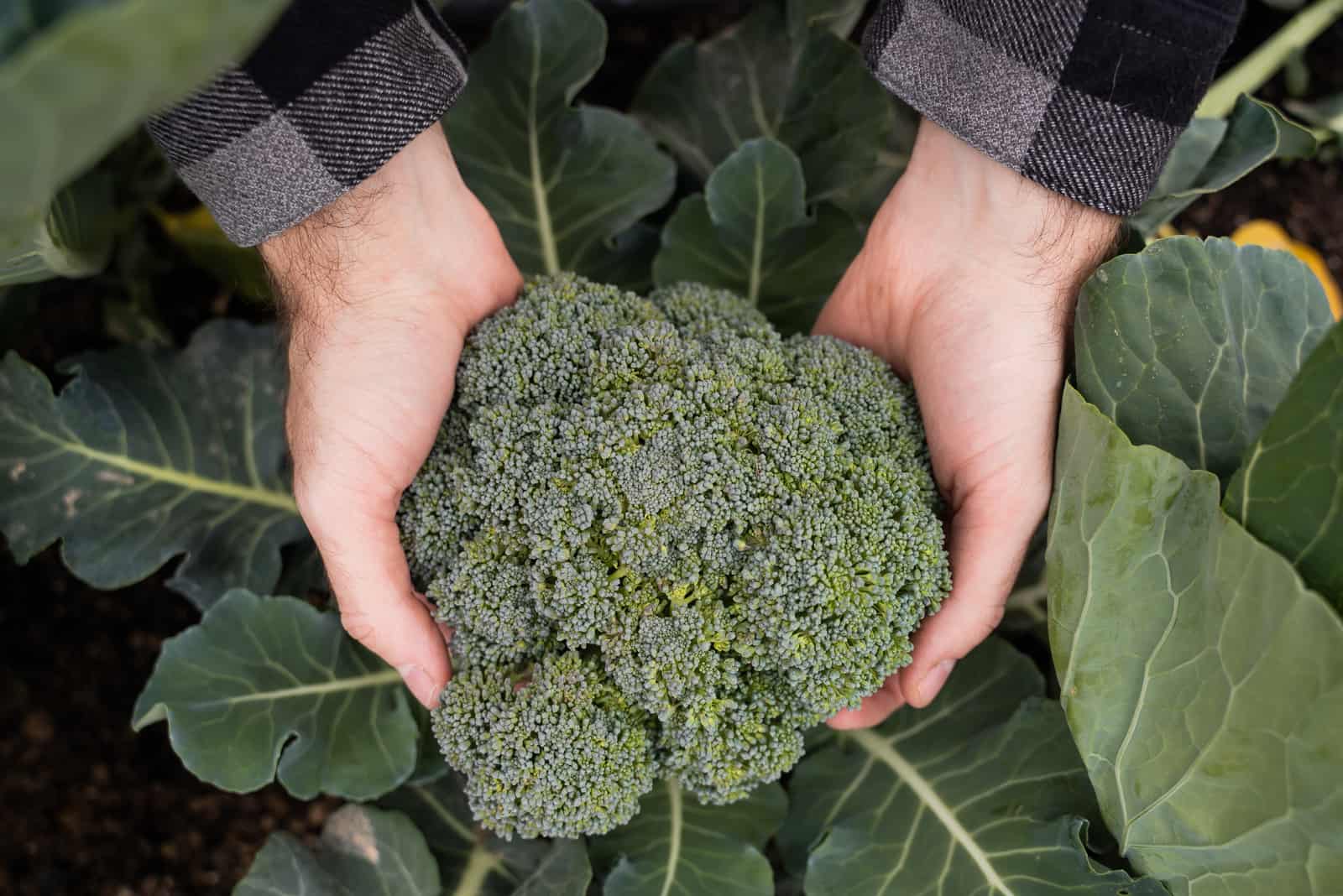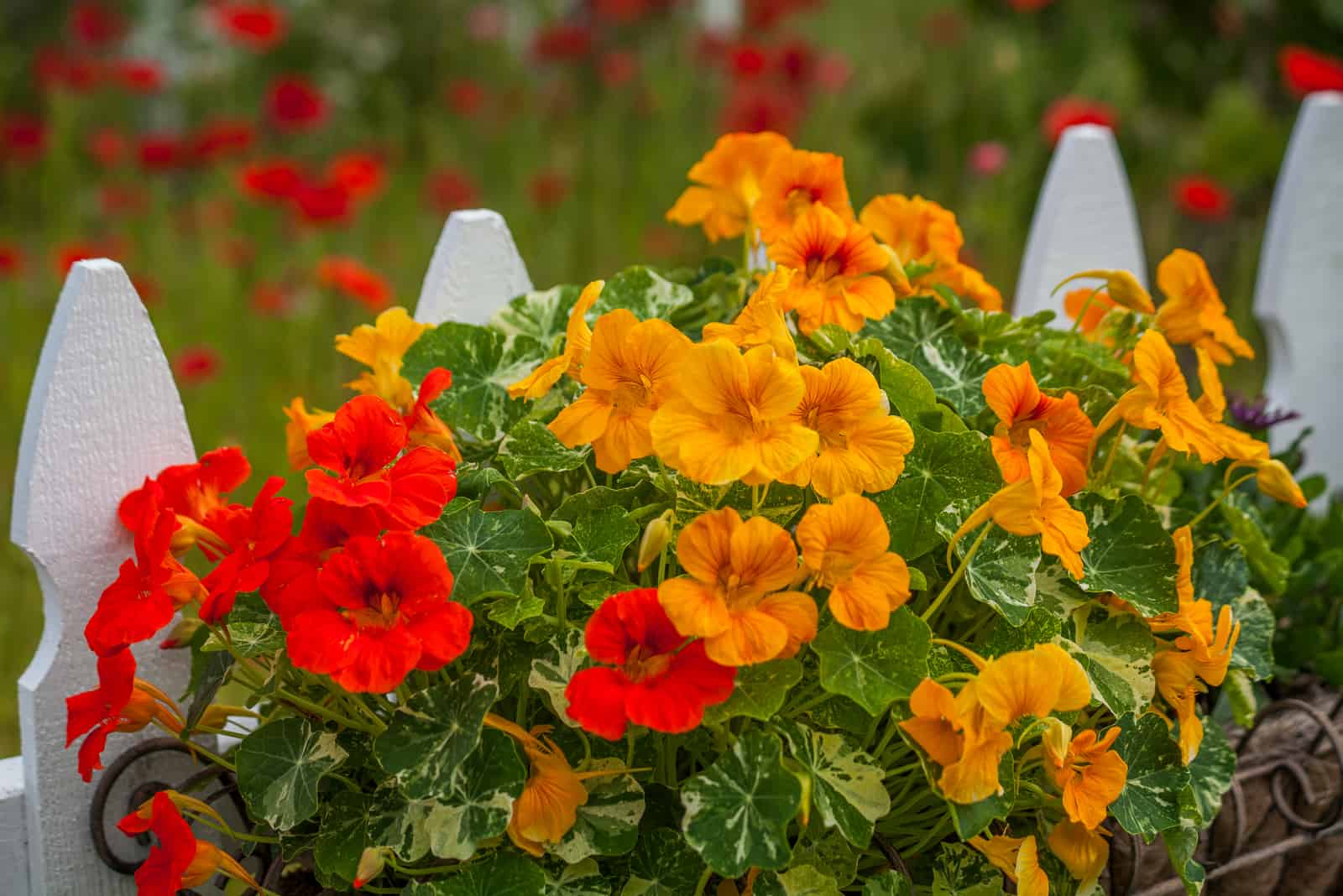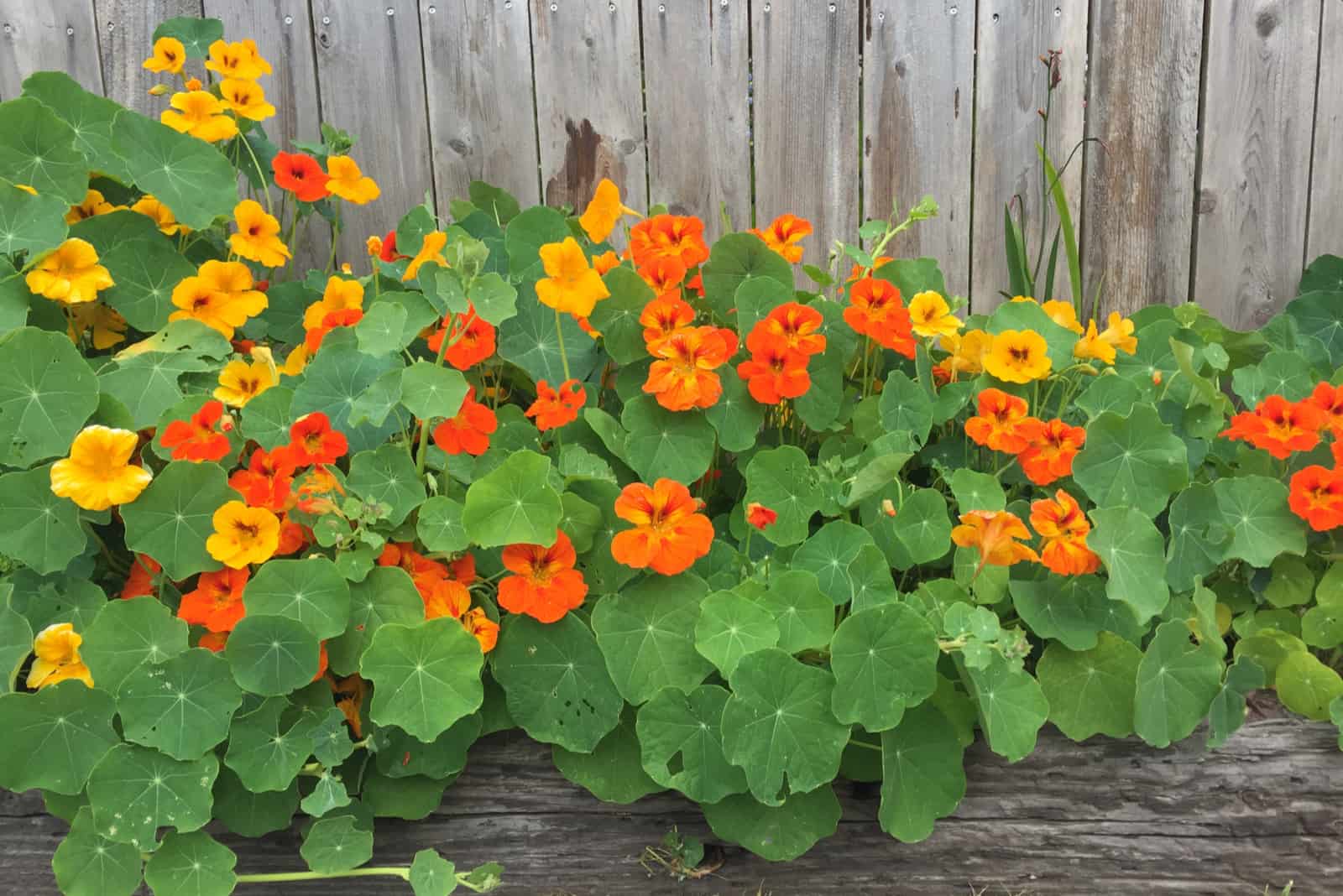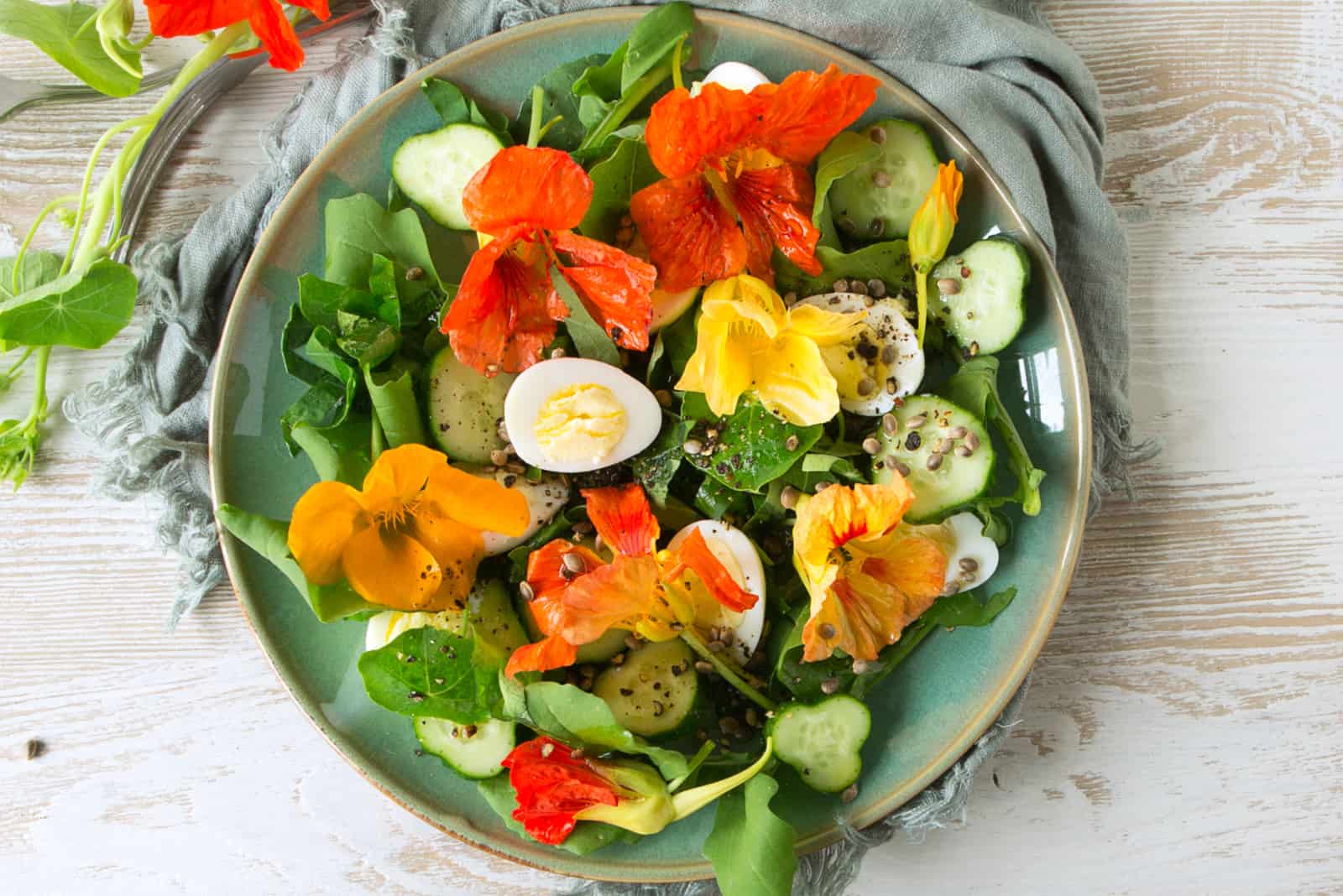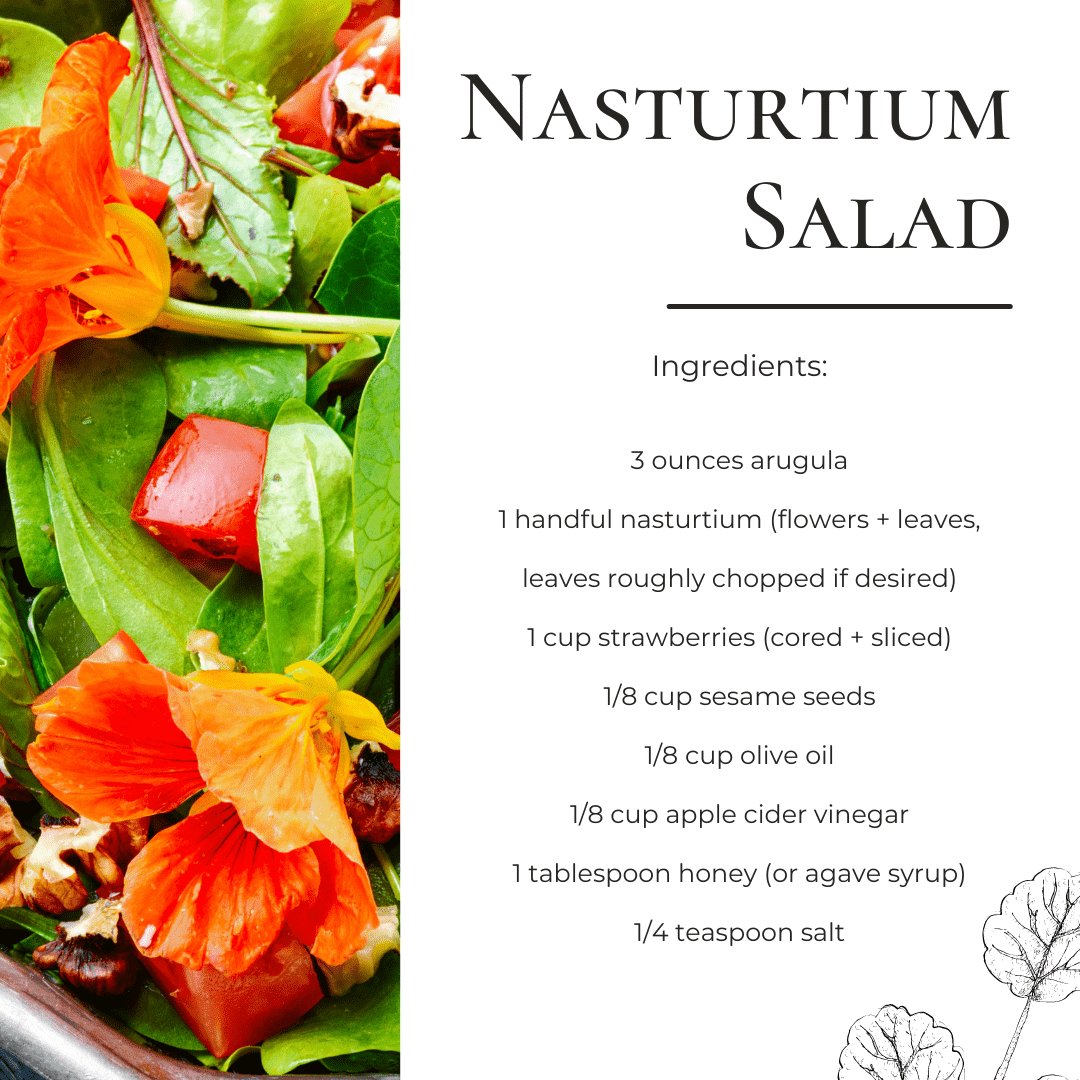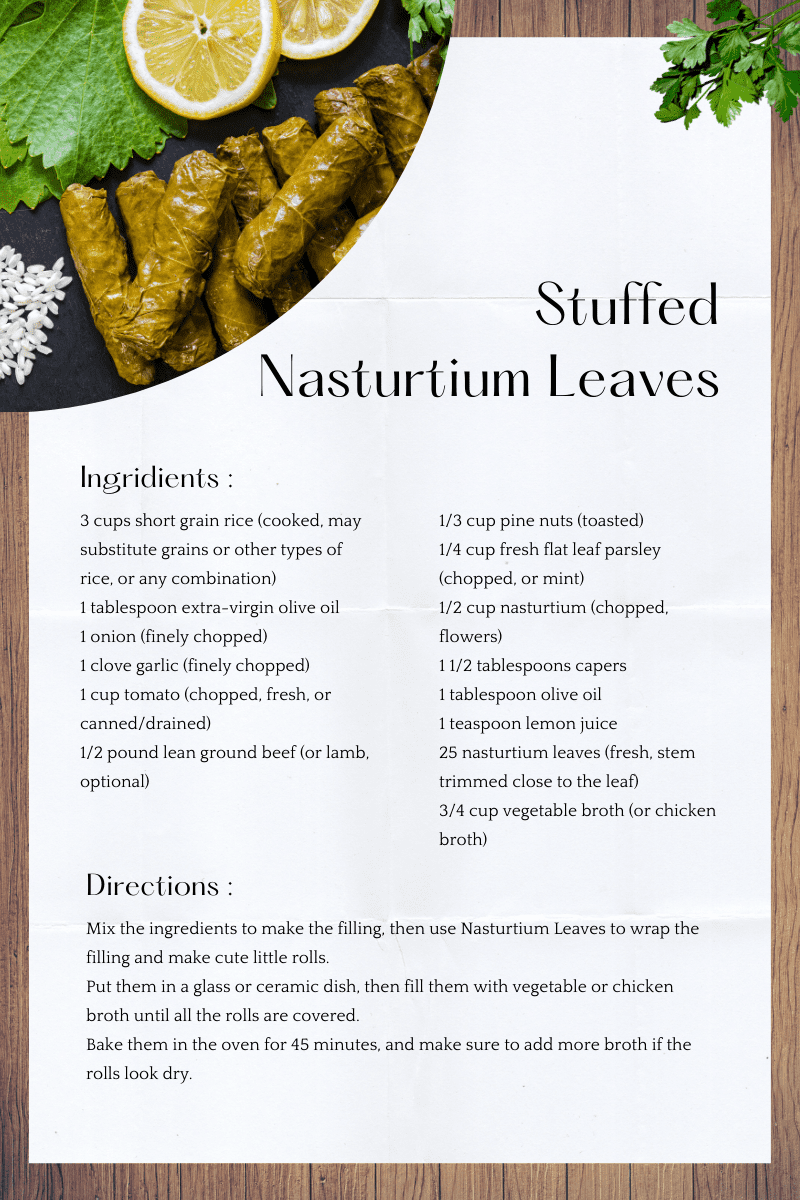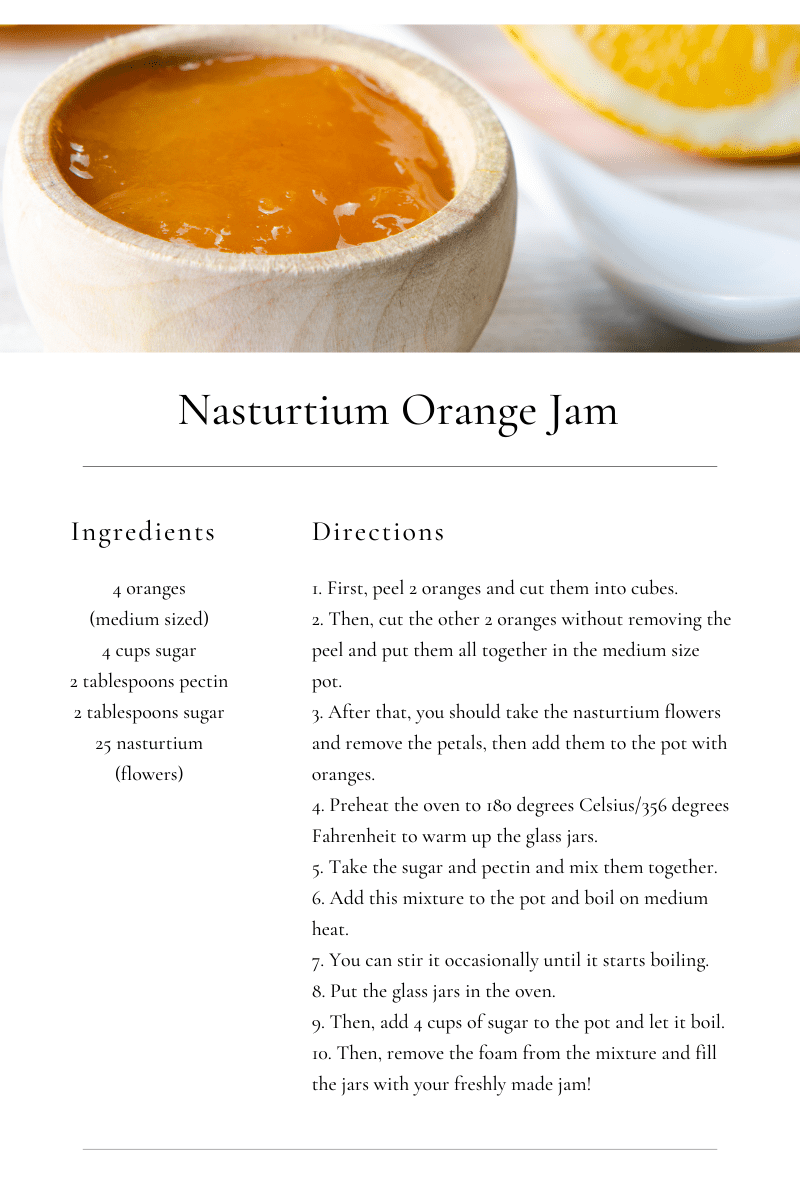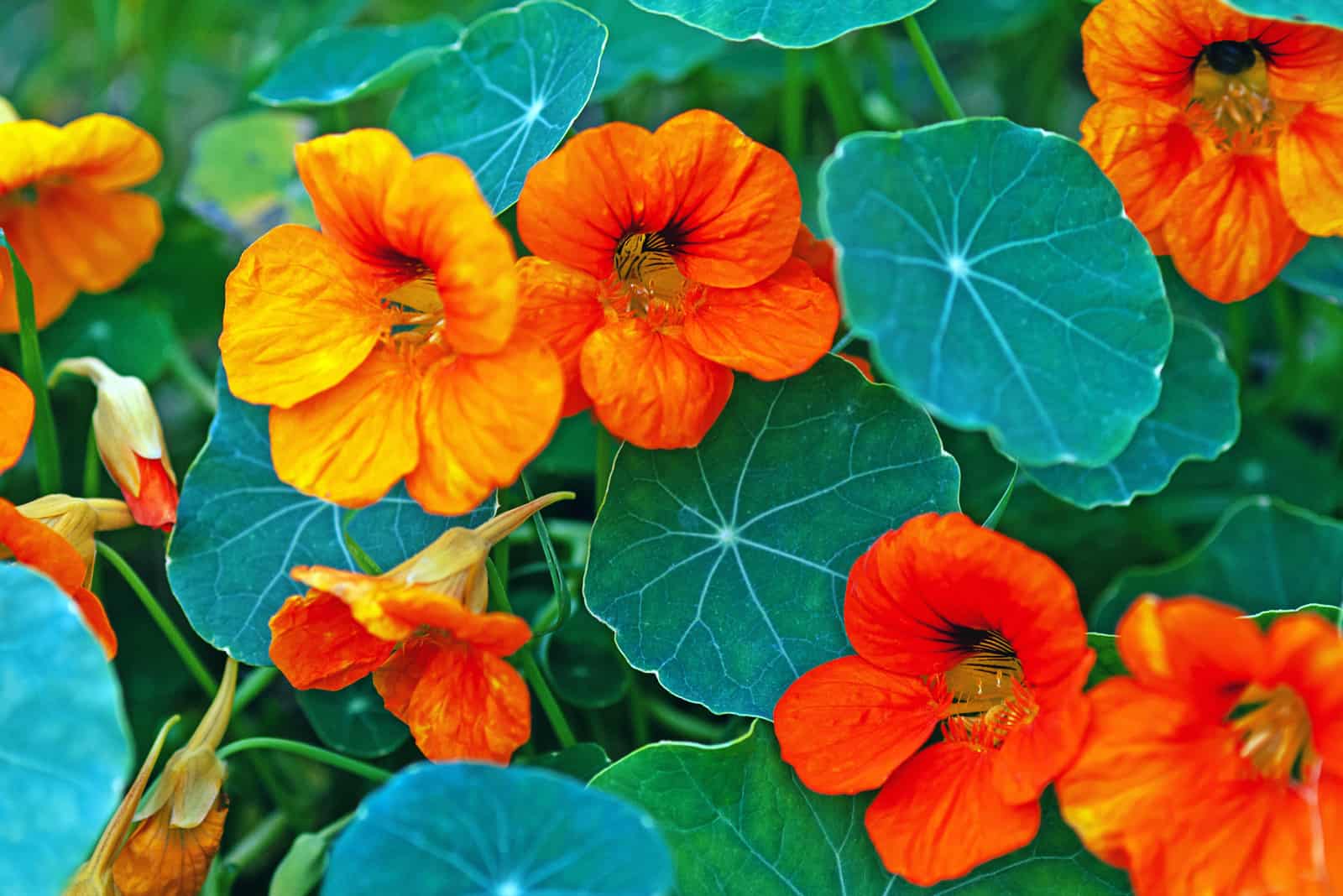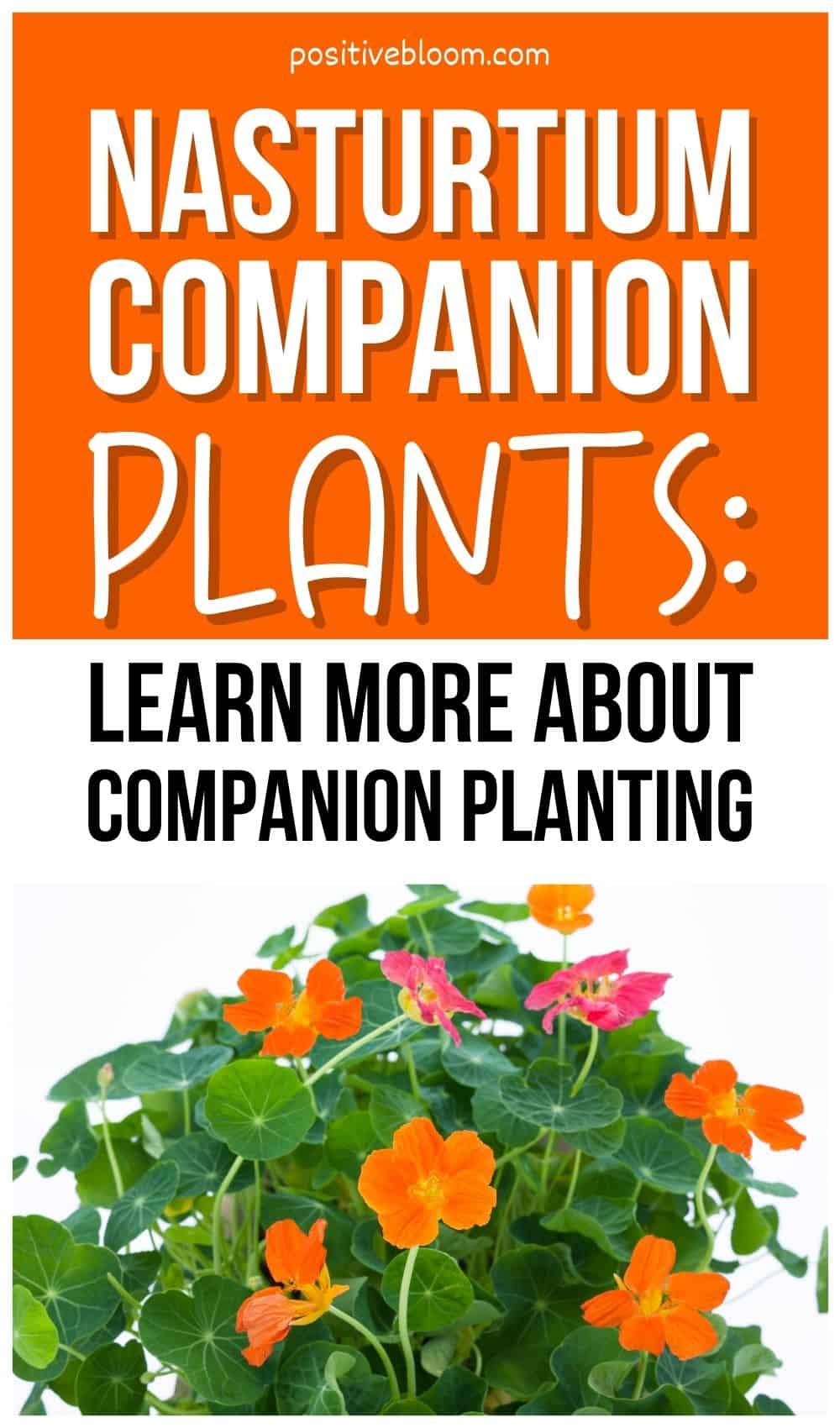Did you know that plants can help each other just like one person can help another?
Well, we don’t say that plants are companions just because they grow next to one another; companion plants are plants that are usually placed together for their mutual benefits.
These benefits can be fighting common pests, improving growth, enhancing flavor, or attracting the beneficial insects. These are perfect examples of symbiosis, which is a common term in science used to describe the interaction between two biological organisms.
Nasturtium is a good companion, which is why it is often grown in gardens. In addition to this, Nasturtium is also edible and can be used in salads and meals and will make your vegetable garden look aesthetically pleasing due to its various colors!
Read on to find out more about Nasturtium and what the Nasturtium companion plants are.
What Are Nasturtium Companion Plants?
The Nasturtium is versatile and gets along with a lot of different plants, mainly because it grows beautiful flowers that attract desirable insects such as hoverflies that can literally destroy pests and insects like aphids, cucumber beetles, whiteflies, etc.
Because of this feature, we often call these plants trap crops as they trap pests and insects, thereby preventing them from invading nearby crops.
If you are a gardener newbie, these are the plants that should be grown with one another to help you improve your gardening skills:
• Beans
• Brussel Sprouts
• Broccoli, Cabbage
• Potatoes
• Lemongrass
• Corn
• Kale
• Eggplant
• Oregano
• Zucchini
• Radishes
• Cauliflower
• Tomatoes
• Kohlrabi
• Pumpkins
• Dill
• Spinach
• Melon
• Apple Tree
If you are interested in expanding your garden and learning more about companion plants, then I would suggest you find out more about chives, leeks, and sunflowers as they all make a great companion plant!
The Cabbage Family
The Cabbage family, commonly known as Brassicas, includes broccoli, Brussel sprouts, kale, kohlrabi, cauliflower, and radish, which are all in our companion plants table.
Gardeners usually plant Nasturtiums next to members of the Cabbage family because their delightful flowers keep away the Japanese beetle. They also serve as a trap crop for cabbage worms.
Another reason Brassicas are grown with Nasturtium is the soil. While Brassicas need a lot of calcium for growth, the Nasturtium has no requirements when it comes to soil type and nutrients, so it can thrive in poor soil and let Brassicas steal all the goodies for themselves!
The Cucurbits Veggies
The Cucurbits veggies refer to a family called the Cucurbitaceae, which includes pumpkins, cucumbers, zucchini, melons, and squash from our garden companion table.
Cucumbers & Nasturtium
The sneaky cucumber beetle carries bacteria that infects the vascular system of a plant, which causes it to wilt. These cucumber beetles can pick up the bacterium when feeding on infected plants, then transfer it to the next one.
They remain undetected until you can actually see the damage on your plant. Unfortunately, once the plant has been infected it cannot be saved.
Luckily, our Nasturtium is here to save them!
Nasturtium flowers deter the cucumber beetle, and therefore save your cucumber plant.
Melons & Nasturtium
The Nasturtium is a great companion plant for melons because it attracts aphids and other pests that would otherwise invade your melons.
These pests will leave your melons alone and focus on the Nasturtium as they love the edible flowers and leaves.
Additionally, their flower produces airborne chemicals that repel insects like whiteflies, ants, and squash bugs.
Squash & Nasturtium
Squash beetles infest squash the same way cucumber beetles infest cucumbers. They also go undetected for some time then permanently damage the plant.
Nasturtiums are often planted nearby to trap the pests and repel any insects that could harm your plant. They are also able to enhance the flavor of the squash.
Pumpkin & Nasturtium
Pumpkin is a cucurbit veggie that is also susceptible to pests and insects. It would be best to grow pumpkins near a nasturtium that keeps the bugs away, and marigolds are also very helpful.
Why Marigolds?
Well, Marigolds are also a good companion plant that deter destructive insects like squash bugs, which absolutely love destroying pumpkins.
Zucchini & Nasturtium
In order for your zucchini to grow strong and healthy, you must protect it from pests and bugs that want to destroy it!
To do that, you can plant nasturtium and marigolds next to them in garden beds.
Nasturtium will prevent pests like flea beetles from attacking your zucchini, while marigolds will scare away the nematodes!
Other Vegetables
There are a few vegetables from the table that we haven’t covered yet. These include nightshades like tomatoes, potatoes, and eggplants, as well as oreganos, dills, and apple trees.
Nightshades & Nasturtium
Tomatoes, potatoes, and eggplants are usually prone to pests such as aphids. To avoid using pesticides that can further damage your plant, you could grow Nasturtium as a precaution.
Nasturtium is grown as a trap crop in this case, and will protect your nightshade vegetables from pests and bad insects.
Apple tree & Nasturtium
Nasturtium is often planted under apple trees because it can actually deter the codling moth, whose caterpillar can damage the fruit and make them “maggoty”.
More About Nasturtium
Nasturtium is a special plant primarily known for producing colorful flowers, which is why it is often planted in flower gardens. However, it is also known for being very hardy, which makes it a great companion in gardening.
Nasturtium leaves and flowers are also edible!
They are often used in salads and as a garnish; just imagine those vibrant colors on your plate! They will immediately make your food look a lot more captivating.
Not only do they taste good, they also smell good!
Their distinctive fragrance and vibrant flower colors will attract pollinators like hummingbirds and bees, and the prominent bright flowers adorned by hummingbirds and bees as regular visitors will make your garden look like a fairytale!
Types of Nasturtium
There are many Nasturtium varieties that exist today, and they are divided into two groups based on their growth habits: climbing Nasturtium (Tropaeolum majus), and bush Nasturtium (Tropaeolum minus), which is also known as “dwarf”.
The climbing type is usually used as a decorative plant in landscaping. With their exotic flowers and green leaves, they look like art when climbing on trellis!
The bushy type is more compact and easily contained, which is why it is planted in small gardens.
How To Grow Nasturtium
If you have just bought nasturtium seeds and don’t know what to do with them, don’t worry, we’ve got you!
You can either eat them or sow them (the seeds from this plant are edible as well!).
Planting The Nasturtium Seeds
Nasturtium seeds can be sown immediately in the garden, or you can start your plant indoors to prepare it for the growing season. Bear in mind that their roots are fragile and they don’t like being transplanted.
However, if you choose to start your plant indoors, make sure to sow them at least two weeks before the last frost and then transplant them outside in the late spring.
When sowing them directly into the ground, make sure that the last frost has been over for at least two weeks before sowing. This way the soil temperature is optimal and the seeds won’t be exposed to late frosts.
Rake the soil and plant the seedlings 1.5 cm deep and 10 cm apart from each other. Then, cover the seeds with soil and you can expect to see Nasturtium younglings in just a couple of weeks.
The plant will grow quickly, and you will be able to collect the seeds and save them for next year!
How to plant Nasturtium seeds in containers
You must first prepare the potting mix. Nasturtium will actually grow better when planted in poor soil instead of nutrient-rich soil. We recommend you use two-thirds peat-free compost and mix it with one-third fine gravel in order to provide optimum drainage.
Remember to plant them so that the crown of leaves is always at soil level.
How To Take Care Of Nasturtium
Nasturtiums are known for being very hardy, and they are mostly used in organic gardening as companion plants.
Therefore, we can conclude that they are pretty easy to take care of and do not have any special requirements.
The requirements of your nasturtium can be found in the care guide below.
Water
Your Nasturtium prefers having slightly moist soil, so you should water it at least once or twice a week. However, avoid overwatering as it can lead to root rot.
When watering, make sure that you soak the soil no less than 6 inches, and your Nasturtium will be good.
Soil & Fertilizer
Another thing that makes Nasturtium unique is that they will actually thrive in poor soil!
It’s so unlikely for a plant that produces such beautiful flowers not to have special soil requirements.
However, you should provide them with fast-draining soil, especially when grown in pots and containers.
If they don’t need nutrient-rich soil, they also don’t need extra foods and nutrients. So, when growing Nasturtium, avoid fertilizing the plant in total; particularly nitrogen-containing fertilizers that will cause the plant to produce more leaves than flowers.
I recommend you add mulch around your Nasturtium and its companion plants, mainly because it will keep the soil temperature cool and prolong blooming during hot weather.
Light Requirements
Nasturtium love full sun exposure (usually from 6 to 8 hours a day), although they can also grow in partial shade.
This is so convenient when growing in flower gardens, mainly because the majority of plants are sensitive to full sun exposure and you are often left with empty spaces in your garden.
When growing nasturtiums, you won’t have to worry about those pretty flowers getting burned because they absolutely love the sun, just like sunflowers!
Plant enthusiasts often grow these plants indoors and use them year-round. In this case, you can put the plant in a hanging basket near a window that gets full sun throughout the day.
Temperature & Humidity
Being one of the rare plants that enjoys full sun exposure, they also enjoy being in warm temperatures and can often tolerate being exposed to extreme temperatures.
This plant isn’t perfect though, as even though it can tolerate extremely hot temperatures, it is impaired when even slightly exposed to frost.
They prefer average levels of humidity. Too dry or too humid an environment might cause some issues with the plant.
Nasturtium pruning
There are no strict rules when it comes to pruning a Nasturtium. You should prune the bushy types when you spot a dead flower or leaf.
However, you should prune frequently when it comes to climbing types, as they get visually messy and tend to spread rapidly.
Some folks also use the Nasturtium as ground cover instead of grass, exactly because they spread easily and are easier to take care of compared to certain grass types, which can’t tolerate full sun or need a certain type of soil and so on.
Pruning old flowers will prevent seed formation, and cutting old stems will encourage the growth of new flowers and leaves.
If you accidentally cut a healthy stem, you can always put it in soil and use it for propagation. That’s all you need to do to get a brand new
Nasturtium in your garden!
Nasturtium propagation
Although it’s common to grow Nasturtium from seeds, you can also propagate the plant from stem cuttings.
Both of these processes are easy and quick, so you can grow this cheerful plant wherever you want!
When propagating, use a stem cutting at least 7 cm long, remove the bottom leaves, and place it in soil. You can use any regular potting soil, just make sure that it’s peat-free.
If you don’t have any small pots, don’t worry!
You can use a coffee cup and fill it up with soil, just don’t forget to cut holes at the bottom though, as the plant needs this for drainage.
Place it somewhere sunny
These little cutting stems also love sun, so you should put them in a sunny place and keep the soil moist. This will promote root growth and help them form within a week or two.
Kids will absolutely love this fun and easy gardening experiment, and you won’t have to worry about them destroying your beloved plant as you simply give them the broken pieces, and they will also do the job!
For more visual information, you can check out this video:
Common Problems With The Nasturtium
As we previously mentioned, the Nasturtium is usually used as a trap crop when practicing companion planting, mainly because they attract certain pests and insects and keep them away from other nearby plants.
So, the main issue with it is pest infestation, and aphids in particular.
If you use nitrogen-containing fertilizers, your nasturtium will produce lush foliage due to the excess nitrogen and will automatically attract aphids.
The best thing would be to grow this plant organically in unfertilized soil, and just let the beneficial insects come and fight off those annoying pests before they do significant harm to your plant.
You can use pesticides if you want, however you should know that they will reduce a food source for beneficial insects and can actually damage the good insects. This reduces them and disrupts the natural balance between good and bad insects.
Also, if you plan on growing Nasturtium for eating and preparing meals, you might want to reconsider applying any kind of chemicals to your plant.
Why Does My Nasturtium Have Yellow Leaves?
The main reason Nasturtium leaves start to turn yellow and fall off is inadequate watering. You are probably overwatering or underwatering your plant, and to figure out which one it is you should check the soil before watering.
If the soil is dry, then you are probably underwatering, and if the soil is soggy then you are overwatering your Nasturtium plant.
Another reason might be the warm climate. Although they absolutely love warm temperatures, if you live in a region with extremely hot weather this can burn your plant. In this case, your Nasturtium should be treated as cool-season plants and grown during spring and fall.
Nasturtium As Food
There are loads of advantages that come with growing nasturtium, such as serving the plant community so well and decorating your garden with those prominent and bright flowers, but nothing can top the deliciousness that comes with it!
It seems that you can eat every part of this plant: the leaves, flowers, and seeds, although the roots are not suitable for eating.
Despite the fact that you don’t see the Nasturtium regularly in grocery stores, they have a spicy, peppery flavor and are frequently added to salads along with the calendula and borage.
Not only are they super delicious, but they are also filled with nutrients such as vitamin C, iron, and other minerals your immune system will love!
You can also harvest the seeds from flowers and use them just like you would use capers (nasturtium seeds are known as poor man’s capers).
Just collect the seeds while they are still green, put them in a glass jar, and use them as alternative capers.
How To Harvest Edible Nasturtiums And Seeds
There aren’t many complications when it comes to harvesting Nasturtiums, just pluck as many leaves and flowers as you need.
The perfect time to pluck leaves and use them for culinary purposes is when they are young and juicy, so pluck them at the beginning of growth.
The flowers are harvested like any other flower. You cut the stem with the flower and place it in water if you aren’t going to use it immediately, as it can wilt quickly. You can eat the buds, or wait until the flowers are fully bloomed. The longer you wait, the spicier they become.
So, if you are not a fan of spicy food, I would suggest you don’t wait until the end of a season to use the flowers in dishes. They could work for decoration though!
The Best Nasturtium Recipe
If you are planning to spice up your meals with Nasturtium, check out the best recipes right here!
Nasturtium Salad
You have probably heard about the famous sweet and spicy Nasturtium salad, which comes with strawberries and vinegar. Get the necessary ingredients and mix them together, and enjoy your delicious salad!
• 3 ounces arugula
• 1 handful nasturtium (flowers + leaves, leaves roughly chopped if desired)
• 1 cup strawberries (cored + sliced)
• 1/8 cup sesame seeds
• 1/8 cup olive oil
• 1/8 cup apple cider vinegar
• 1 tablespoon honey (or agave syrup)
• 1/4 teaspoon salt
Stuffed Nasturtium Leaves
The perfect combination of meat and veggies, with a touch of Nasturtium spiciness, makes one sensational dinner for the whole family!
You should mix the ingredients listed below to make the filling, then use Nasturtium Leaves to wrap the filling and make cute little rolls.
Put them in a glass or ceramic dish, then fill them with vegetable or chicken broth until all the rolls are covered. Bake them in the oven for 45 minutes, and make sure to add more broth if the rolls look dry.
Ingredients:
• 3 cups short grain rice (cooked, may substitute grains or other types of rice, or any combination)
• 1 tablespoon extra-virgin olive oil
• 1 onion (finely chopped)
• 1 clove garlic (finely chopped)
• 1 cup tomato (chopped, fresh, or canned/drained)
• 1/2 pound lean ground beef (or lamb, optional)
• 1/3 cup pine nuts (toasted)
• 1/4 cup fresh flat leaf parsley (chopped, or mint)
• 1/2 cup nasturtium (chopped, flowers)
• 1 1/2 tablespoons capers
• 1 tablespoon olive oil
• 1 teaspoon lemon juice
• 25 nasturtium leaves (fresh, stem trimmed close to the leaf)
• 3/4 cup vegetable broth (or chicken broth)
Nasturtium Orange Jam
If you love mixing sweet and spicy flavors, then you absolutely must try this Nasturtium orange jam!
The bitter-sweet flavor of an orange mixed with spicy Nasturtium flowers makes one of the most refreshing jams that I have ever tried in my life!
Ingredients:
• 4 oranges (medium sized)
• 4 cups sugar
• 2 tablespoons pectin
• 2 tablespoons sugar
• 25 nasturtium (flowers)
Instructions:
1. First, peel 2 oranges and cut them into cubes.
2. Then, cut the other 2 oranges without removing the peel and put them all together in the medium size pot.
3. After that, you should take the nasturtium flowers and remove the petals, then add them to the pot with oranges.
4. Preheat the oven to 180 degrees Celsius/356 degrees Fahrenheit to warm up the glass jars.
5. Take the sugar and pectin and mix them together.
6. Add this mixture to the pot and boil on medium heat.
7. You can stir it occasionally until it starts boiling.
8. Put the glass jars in the oven.
9. Then, add 4 cups of sugar to the pot and let it boil.
10. Then, remove the foam from the mixture and fill the jars with your freshly made jam!
Frequently Asked Questions
1. What should not be planted next to Nasturtiums?
What makes the Nasturtium the ultimate companion plant is that it can be grown with any kind of plant. It has no preference when it comes to nearby plants, they will hang out with anybody!
Bear in mind that the majority of companion plants are just folk talk, and it has not been supported by science. However, you can experiment in your own garden and see which plants grow the best next to one another.
2. Are Nasturtiums perennial plants?
Depends on your region. They are usually annual plants that thrive in warm climates, however they are perennial in zones 9-11. Quite often these plants reseed themselves, so you don’t have to worry about planting or propagating them.
3. What is a plant that can be planted near Nasturtiums?
There are numerous vegetables that can be planted near Nasturtiums, and they are beans, Brussel Sprouts, broccoli, cabbage, potatoes, lemongrass, corn, kale, eggplant, oregano, zucchini, radishes, cauliflower, tomatoes, kohlrabi, pumpkins, dill, spinach, melon, and lastly, apple trees.
There are many other companion plants like leeks, marigolds, and sunflowers.
4. Should I plant Nasturtium in my vegetable garden?
If you have one, then you definitely should!
Not only is a Nasturtium a great companion plant, but it is also very exotic-looking and its vibrant flowers will make your garden appear more lively and cheerful.
It is easy to take care of and has almost no preference when it comes to soil type. I don’t think that poor soil should be considered as a preference, however they do prefer poor soil that isn’t rich in nutrients, and they also don’t require any fertilizers whatsoever.
They are also edible and you can make delicious, spicy salads, as well as sweet and spicy jams from it! Their pretty flowers are often used for decorating food too.
To Sum Up
Nasturtium is a great plant for organic gardening primarily because it serves the plant community, which means it is a great companion plant that can attract beneficial insects and repel the bad ones!
It is often used as a trap crop to attract pests like aphids and capture them, which saves the plants nearby.
Nasturtium companion plants includes beans, Brussel Sprouts, broccoli, cabbage, potatoes, lemongrass, corn, kale, eggplant, oregano, zucchini, radishes, cauliflower, tomatoes, kohlrabi, pumpkins, dill, spinach, melon, and apple trees!
Not only do they make a good companion plant, but they are also known for being very hardy, easy to take care of, and edible – the perfect combination for a gardening newbie!
In addition to this, they grow beautiful, vibrant flowers that are used as decoration in landscapes and also make a good garnish!
Nasturtiums are truly one of a kind.
If you are interested in knowing more about companion planting, you can also check out the yarrow companion planting habits.
Until next time!
Like this post? Share or pin it for later!

